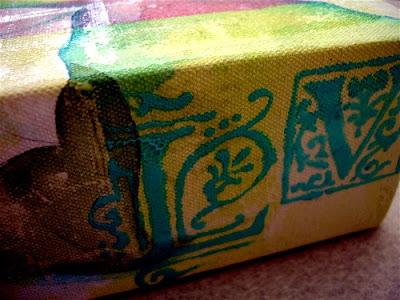
resist: 1325–75; ME resisten (v.) < L resistere to remain standing,
a substance that prevents or inhibits some effect from taking place
I really like a textured looking background, but I paint in very thin washes, which isn't compatible with the thicker and more opaque layers that are usually seen in mixed media. Putting down some kind of resist before I add color helps create some dimension and interest.
I start with a very lightly gessoed canvas that is still quite porous. Too much gesso will make the canvas too slick and not porous enough. I also experimented on a lightly gessoed Moleskine page, and bare watercolor paper.
For the resist in my projects today, I used a regular glossy gel medium, an ultra heavy glossy gel medium, and modeling paste. Anything that makes a mark that is less porous than the canvas or paper will work as a resist.
a substance that prevents or inhibits some effect from taking place
I really like a textured looking background, but I paint in very thin washes, which isn't compatible with the thicker and more opaque layers that are usually seen in mixed media. Putting down some kind of resist before I add color helps create some dimension and interest.
I start with a very lightly gessoed canvas that is still quite porous. Too much gesso will make the canvas too slick and not porous enough. I also experimented on a lightly gessoed Moleskine page, and bare watercolor paper.
For the resist in my projects today, I used a regular glossy gel medium, an ultra heavy glossy gel medium, and modeling paste. Anything that makes a mark that is less porous than the canvas or paper will work as a resist.
There are several different ways to put the resist down. Any kind of handmade or rubber stamp lightly coated with gloss medium can be pressed into the canvas or paper. A palette knife can be used to spread an imperfect coat of modeling paste in places on the canvas ...
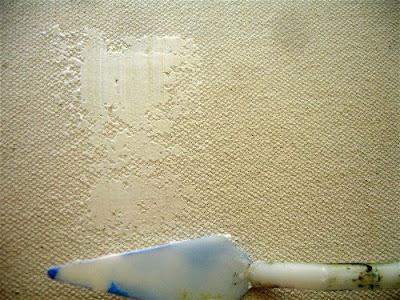
Using an old brush, glossy gel medium can be flicked in spots at random over the canvas.
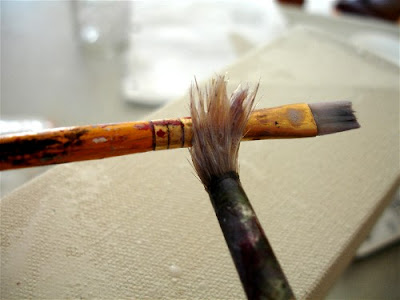
Screens, stencils, silk screens and anything else with an open pattern can be used to press modeling paste or gel medium through.
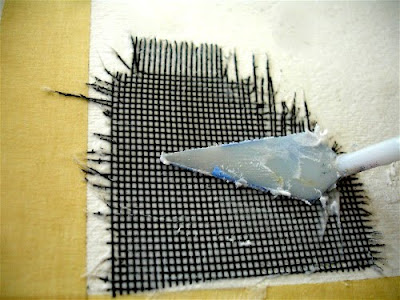
Once the different resists are down, I add thin washes of acrylic paint. For this project, I wanted a subtle effect with the resists, so I made them fairly thin. The more porous canvas will soak up more pigment than the resist leaving an interesting design.
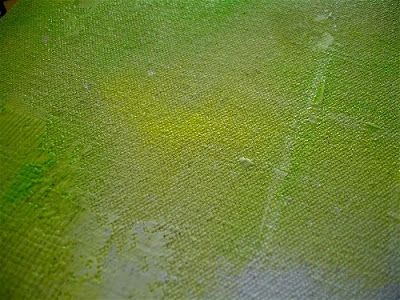
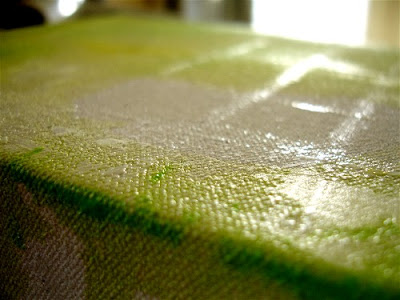
I wanted pink stripes and used masking tape as something of a resist. When using tape, the paint can't be too watery, otherwise it will seep under the edges of the taper. That can actually be an interesting effect, but I didn't want that here so went with a drier paint ... in pink!
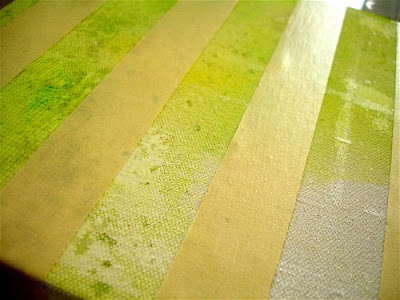 My pink is made of Liquitex Quinacridone Magenta mixed with Titanum White.
My pink is made of Liquitex Quinacridone Magenta mixed with Titanum White.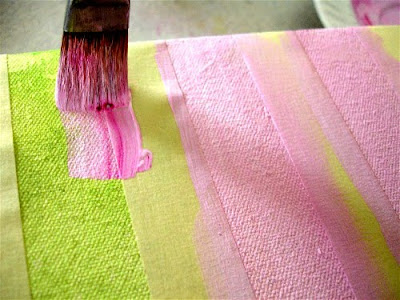
I decided to use a silk screened image over the stripes ...
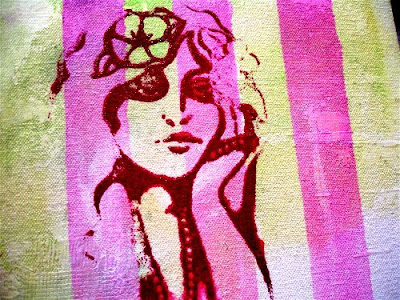
and added some moonflowers ...
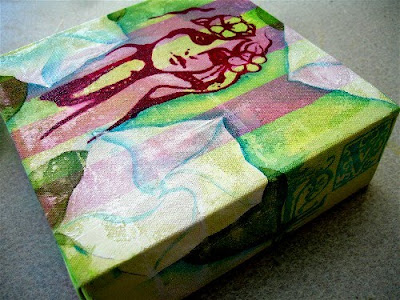
This works the best on canvas, for me anyway. The effect is usually more subtle on paper.
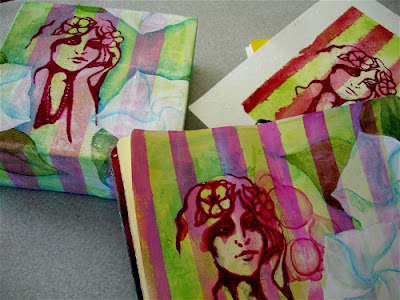
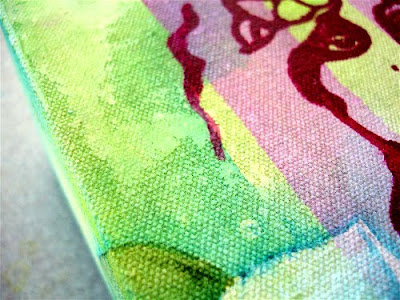
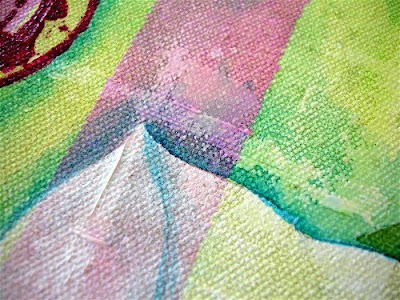
Products used ...
Liquitex
- Ultra Heavy Gel Medium, glossy
- Gel Medium, glossy
- Modeling Paste, light
- Vivid Lime Green
- Yellow Light Hansa
- Quinacridone Magenta
- Titanium White
- Cobalt Teal
- Turquoise Deep
- Sap Green















































